6 pro-tips for taking better photographs of your landscape creations
When choosing a contractor, the client often looks at the portfolio. Knowing how to photograph a garden will therefore help you win new contracts.

The landscape designer’s trade is by its very nature creative and visual. Wanting a garden or communal green space to be attractive to look at is the client’s main reason for coming to you in the first place. When choosing a contractor, one of the first things the client looks at is the portfolio of completed jobs. Knowing how to photograph a garden will therefore help you stand out from the competition and win new contracts. Here are some pro-tips for showing your landscape creations in their best light using nothing but your phone camera!
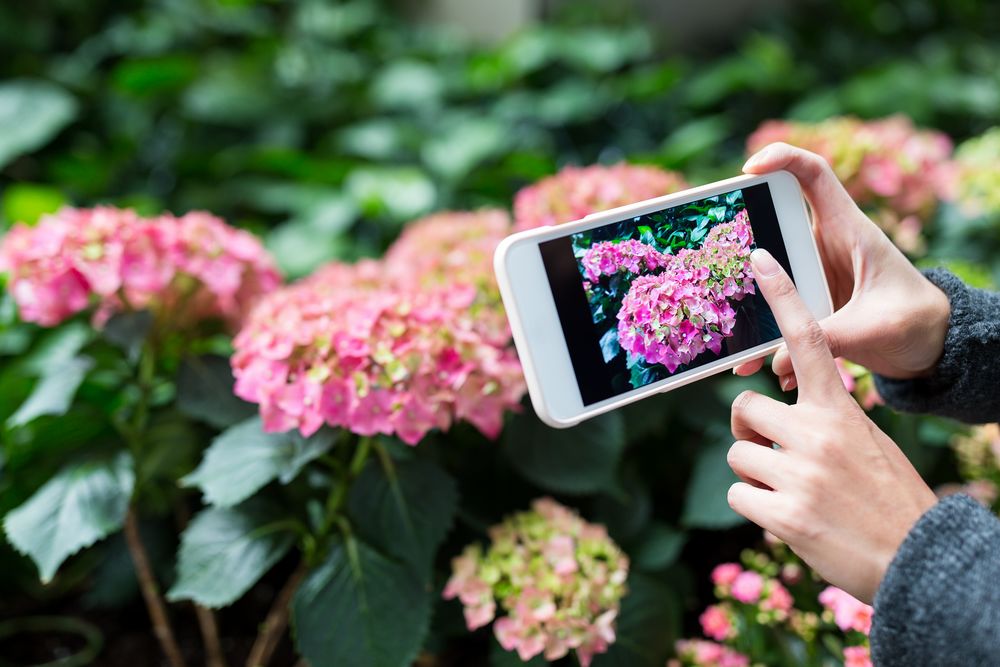
1. Use the rule of thirds
The casual photographer’s most common error is to place the subject dead center. It divides your photo in two, making it dull and static. To improve your garden photographic composition, mentally divide your image into a three-by-three grid with two vertical and two horizontal lines, then position the center of interest at one of the crossing points. That's what vitalizes your photo and guides your audience’s eye! Your camera settings most likely feature a guide grid to help you do just that.
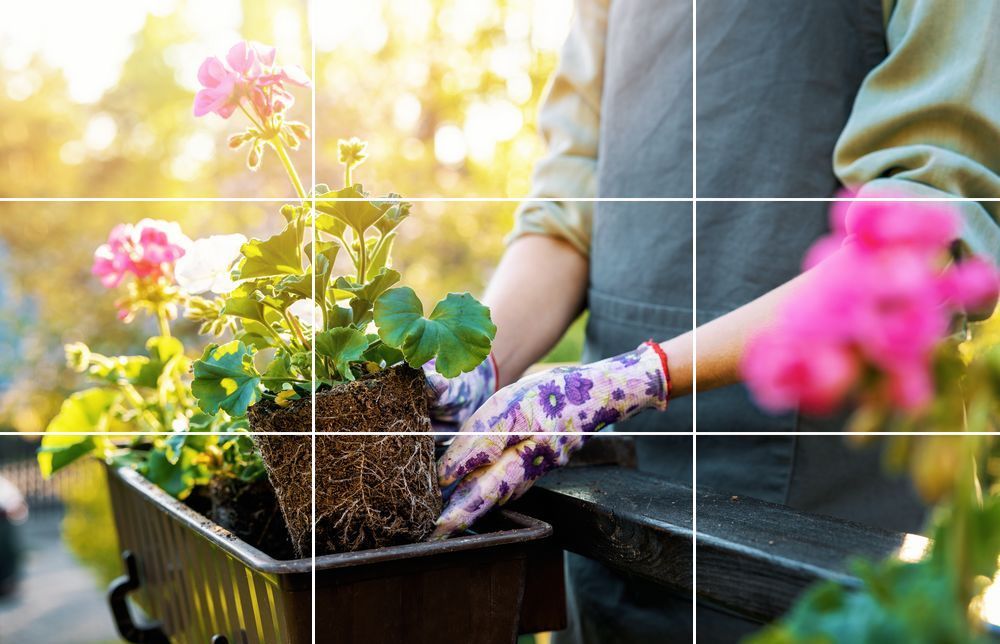
Here’s a photo composition that steers your eyes toward a geranium being planted
© Ronstik / Adobe Stock
2. Choose the right time of day
People tend to think you need a blazing sun in order to take great photos. But the light from the sun at its height is very harsh, creating heavy contrasts on leaves, flowers, and garden walls.
The reason photographers get up early in the morning or choose to work just before sundown is the softer light, which is much more flattering. During the famous, highly photogenic “golden hour”, the garden bathes in an aura of golden light. Clouds can also be your best friend if you need diffused light in the middle of the day!
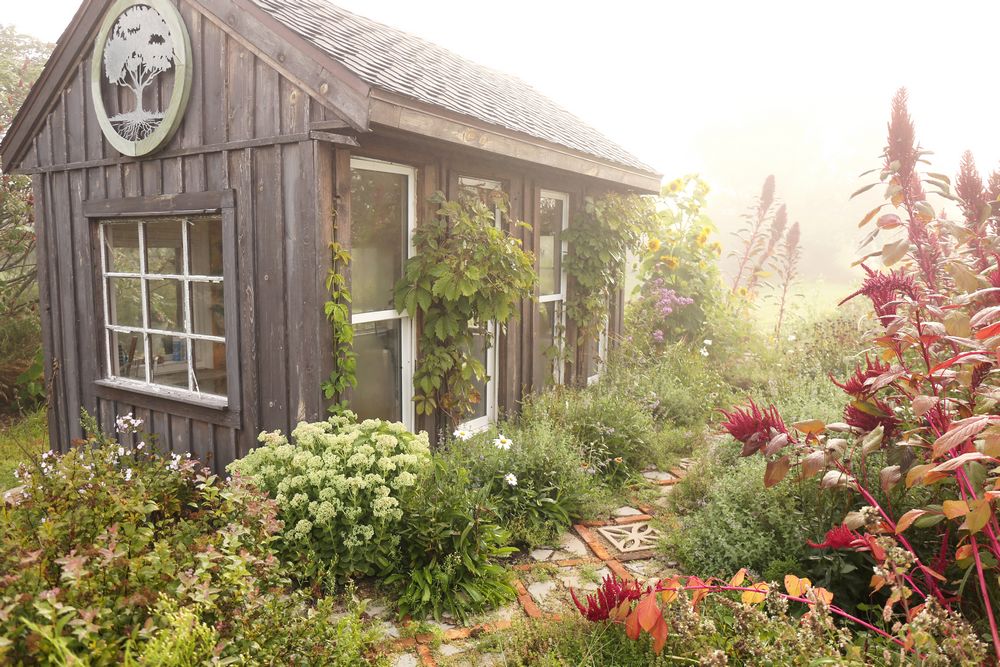
This photograph of a garden shed was taken in the morning mist, producing a very soft lighting
© Christin Lola / Adobe Stock
3. Choose the right format
What medium will you be publishing your photos on? If they are primarily intended for posting on your business social media, we advise you to privilege square or portrait (9:16) formats, ideal for smartphone use or for creating Instagram stories. What’s more, these formats are ideal for showcasing flowers and trees, both vertical subjects.
Whatever format you choose, don’t let it distract you from the rule of thirds!
4. Use different viewpoints
It’s always tempting to press the button with the camera at head height. Although that’s usually fine for an overall view of the landscape creation, it fails badly when showing a specific subject, doing little to attract the eye since it’s a very “humdrum” point of view.
By getting closer to the ground, you can highlight a specific item and, for example, avoid showing newly dug earth which is hardly going to give a good effect. A backlit flower photographed from below, a bee doing its pollen rounds, or a detail in a garden wall will become fascinating subjects.
Conversely, if you have a drone, aerial photos of your flowerbeds, aisles, and water features offer an unexpected; geometrical, birds-eye view that rouses curiosity.
Meet the drone, the new landscaper's best friend
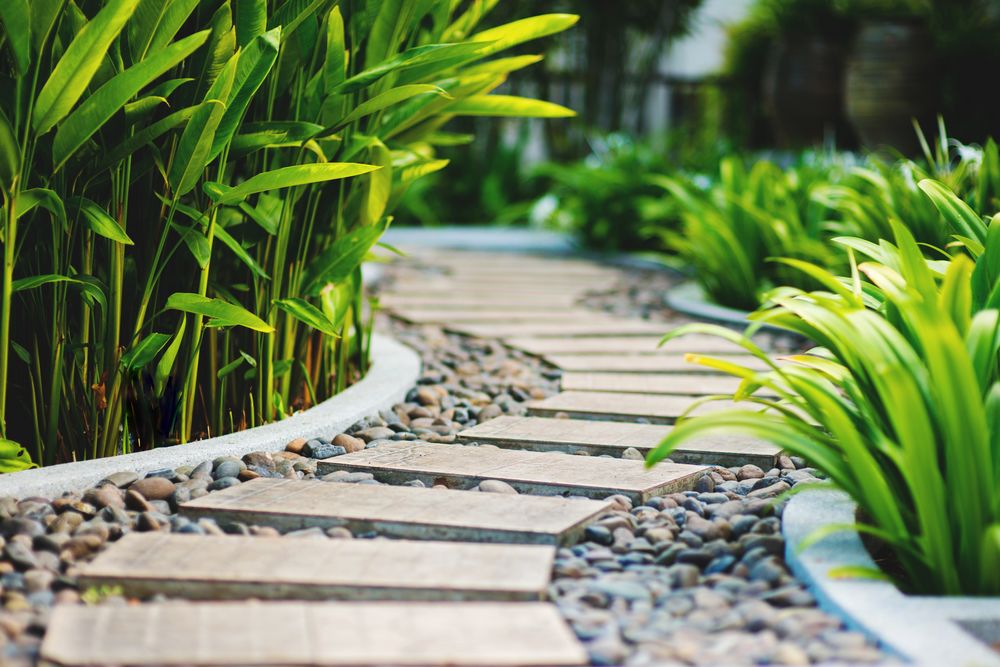
This path takes on a whole new perspective when photographed from ground level
© Olena Bloshchynska / Adobe Stock
5. Provide a window onto situations
Publishing photos of your landscape creations has two objectives:
- To show off your full range of skills
- To get potential clients to picture themselves
Whereas the first of those objectives requires photographs that are more factual and informative in style, the second leaves room for immersion and emotion. And that's what sells! One of the secrets of understanding how to photograph a garden is to think about your audience and how it will help them imagine life—their life—in your green spaces.
All it takes is a spread tea table, a picnic cloth laid out on the grass, or maybe children’s playthings dotted around a patio, and you can evoke a story, create empathy with your audience—and turn them on to your services!
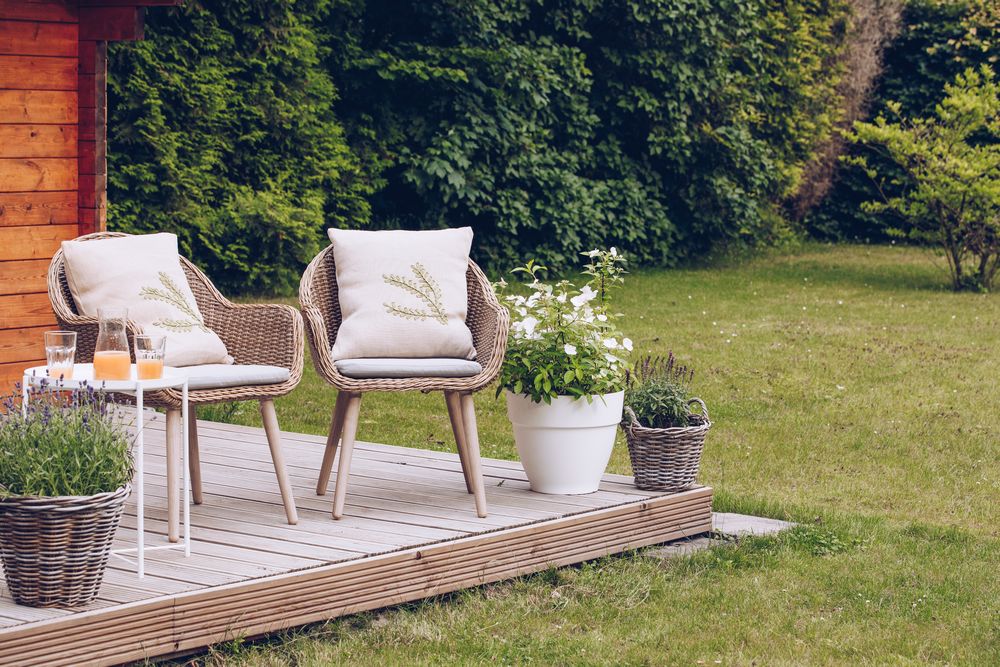
The chairs and half-empty glasses evoke human presence and the way this deck is used
© Marianna / Adobe Stock
6. Use photo editing apps
The photographic capabilities of our smartphones are already quite remarkable, but sometimes we might want to retouch the pics a little to correct certain faults: color balance a bit too cold, badly framed shot, not enough contrast, etc.
There are plenty of photo-editing apps, each with a similar basic set of retouching tools. They generally differ by features like filters, which can radically transform the ambience of a photo. Here’s a list of some free apps you might like to try:
- SnapSeed: Google’s complete photo retouch app is as much appreciated by professionals as by the public at large when it comes to reliability, versatility and ease of use (Google Play / App Store)
- VSCO: is a freemium app famous for its large number of filters, which constitute its main feature. It’s ideal if you want to spend as little time as possible polishing up your photos! (Google Play / App Store)
- Adobe Lightroom: the most famous photo editing software comes in the form of a mobile app that offers pro camerawork and fine-tuned color management. This is for you if you prefer keeping total control over the whole retouching process (Google Play / App Store)
Find out more useful mobile apps for landscapers
Photos worth a thousand words
- 65% of people have a visual memory
- 90% of the information that reaches the brain is visual
- We retain 10% of what we hear, 20% of what we read, and 80% of what we see
In short, visual marketing is important and even more so when your trade is that of giving birth to landscapes rich in colors, shapes, and textures!
When you have lots of beautiful photos of your gardens and other green spaces, you can communicate more effectively on social media. We’ll soon be taking a look at how to create a more attractive Instagram feed that will earn new contracts!
© Photo credit: leungchopan / Adobe Stock



